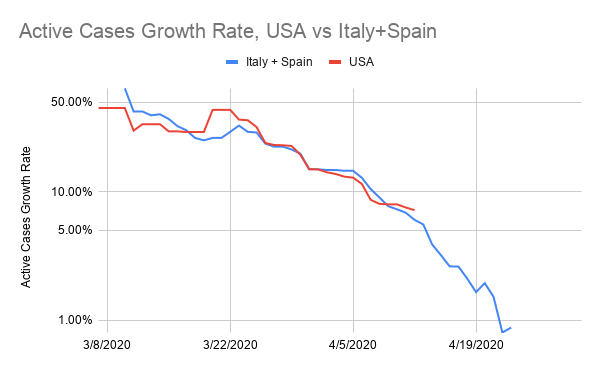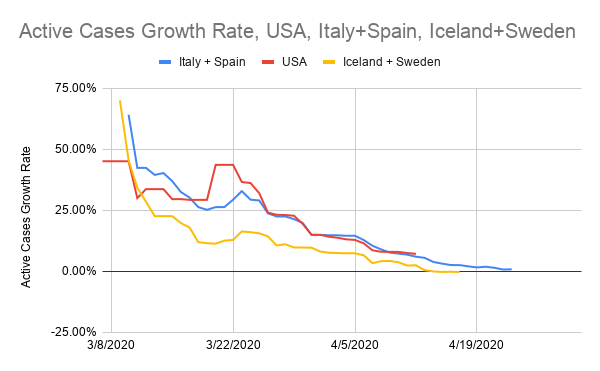Current Consensus View
The consensus view regarding Covid-19 is that it is highly contagious and that only through quarantine can it be defeated — at least until we have better tools with which to fight it. There is also an underlying belief that governments’ policies, especially around implementing quarentines and restrictions, are key in a country’s response. An implied result is that countries that poorly implement restrictions or that do not implement any restrictions are inviting disaster. Looking forward, the consensus seems to be agreeing that mandatory government-sponsored testing and cell phone based tracking are viable solutions to prevent further spread. Without such measures, many state that individuals would not be allowed back into society.
Our View
Our interpretation of the data tells a different story while raising relevant questions. Our conclusion, as it has been for some time, is that the virus is not as bad as the consensus believes. We also conclude that the virus is time and temperature dependent, greatly lessening its potential global impact.
Impact of Temperature
We published a report Covid-19 is Temperature Dependent which shows that locations with milder temperatures have been hardest hit. The virus simply does not appear to do well in temperatures below freezing or above the mid-70s. This temperature-based theory explains why a country experiencing mild temperatures like Italy or Spain received the worst of the situation, even though they instituted rather severe quarantines. In contrast, countries like Poland and Russia, which were still seeing nightly lows go well below freezing, were only marginally impacted. A similar analysis can be done for a country that got hit hard like Iran (mild temperatures) versus India (hot temperatures) which seems to have not been impacted to any great extent.
These points go beyond curiosity. They should be incorporated into the story of the virus as well as the media coverage.
Instead, most media coverage follows policy responses. To a degree, such coverage is important, but we feel that without incorporating the temperature element such coverage will of course make terrible conclusions. For instance, those politicians, administrators, or populace in Italy, Spain, Iran, New York, and any other hard hit location will end up looking problematic whereas those in lesser hit locations could appear better.
For instance, we are led to believe that residents in Singapore have followed their government’s policies well — hence the incredibly low nine deaths. Media have highlighted initial ‘problems’ implementing quarentines in Italy (showing local mayors pleading with citizens to stay at home). It is implied that poor adherence to quarantines in Italy pushed the death toll higher, currently at 20,465. The difference we are led to believe mostly rests on the populace’s following of mandates and most of all quarantines.
According to our data, however, the temperature conditions in Italy at the time of outbreak were almost perfect for the virus as opposed to Singapore which was experiencing temperatures above 80, giving the virus very poor conditions. In short, by not incorporating the proper key variables, the story of the virus and pandemic will not only be told incorrectly but the wrong conclusions will be drawn.
Natural Growth Cycle / Finite Duration of the Virus
One of the current questions we are struggling with is why do so many of the country curves look similar? In other words, why does it seem that various countries are experiencing similar growth metrics for this virus and why do they seem to follow similar time schedules?
The consensus would lead us to believe that quarantines are the most important element in containing the virus — but if this were the case, the growth curves would look different depending on the country and their policy responses.
Some countries implemented quarantines sooner, some later, while some never instituted them. Some countries declared national quarantines whereas others allowed states or local authorities to take the lead, which created a patchwork approach — then we have local or internal travel restrictions, international total or partial travel bans, different definitions of essential jobs, different declarations of maximum group gathering size and (of course) different adherence by the respective populaces.
The chance of countries having the same conditions seems extremely limited, and yet we have similar growth metrics.
Internally, we have been using Spain and Italy as base scenarios in order to forecast confirmed and active coronavirus cases in the US. These countries are ahead in terms of outbreak timing so they tend to work well in letting us know the expected path for the US. We take the average of these two countries, push the data forward and compare to the US. In order to take out some of the volatility, we take a five day median.
As you can see, the average growth rate of active cases in Italy and Spain appear strikingly similar to that of the US. There are of course similarities between the policy responses in these countries, but for their growth rates to move in almost unison is unlikely. Our inclination is that there is a natural growth cycle involved here that supersedes policy responses.
Another interesting observation is that the growth cycle also seems to apply to countries that have not used quarantines. The two most prominent examples are Iceland and Sweden. We replicated the same analysis for these countries and present them next.
Not only is the average growth rate for Iceland and Sweden comparable, it is actually lower. In other words, the countries that did not quarantine actually seem to have done better. (This is not to say that quarantines do not work — the focus should be on the need to better understand the problem as a laser focus on quarantines has not helped to the extent many believe).
The point here is simply that growth patterns appear strikingly similar across a variety of countries. We have shown the US vs two high-profile coronavirus hit countries as well as against two non-quarantine countries — and their growth patterns look similar.
There appears to be a time element that the consensus is not discussing. This time element goes outside of major governmental policy responses. It seems more like a natural occurrence or natural growth cycle.
If this is the case, we could be witness to some of the all-time worst forecasting and worst media coverage in history. This could be right up there with forecasting a 99% probability of a Hillary Clinton win in the 2016 election — or worse still.
Implications for Investing
As we have highlighted on various occasions, even during the peak of the global panic, Covid-19 is not as bad as the consensus believes.
Being temperature dependent implies that it has not been and will not be a true global pandemic but instead hit mild temperature locations hardest, leaving other areas impacted but to a significantly smaller extent.
Having a natural growth cycle implies a finite duration. This is not to say that it might not come back in the future, but a predictable growth cycle makes this virus less impactful. For instance, if we can assume that active cases from the virus will grow for X days (40?) and then decline, the problem is limited by definition.
For the Next Pandemic
Our suggestion is to crowdsource forecasts.
For next time, as there will surely be, it would make more sense for there to be a central data clearinghouse that not only provides data but also explains the assumed workings of the virus / infection / problem. With this information, non-medical forecasters can take the data and make their own forecasts. This is not to say that their forecasts will be necessarily better … but they could be.
One of the advantages of creating such a clearinghouse is that those with more forecasting experience will be given equal access to data. Nothing against those having created the models used to shut down economies, but our expectation is that they do not have that much experience making forecasts.
The current situation relied too heavily on the infamous ‘experts’ models’. These models, to our knowledge, were not made public. Instead, the public received incredibly frightening headline figures of forecasts of millions dead with little explanation, just that experts made them and they should not be questioned.
Next time, create the clearinghouse. It is more transparent and society would benefit from those with the most experience in forecasting interacting directly with those with the most domain knowledge (medical professionals with specific knowledge of the problem).

